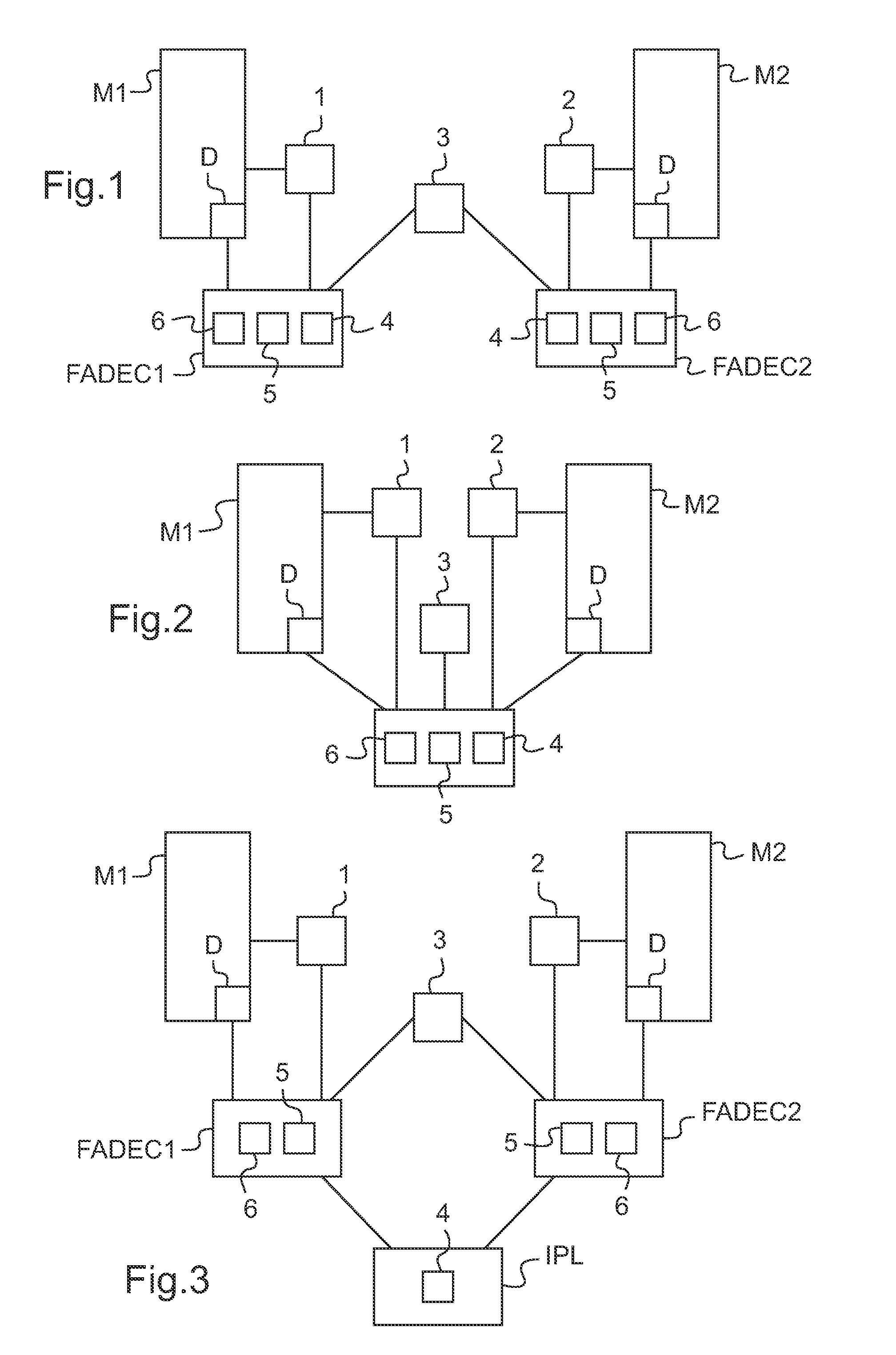Balancing the power of two turboshaft engines of an aircraft
a turboshaft engine and aircraft technology, applied in the direction of instruments, navigation instruments, lighting and heating apparatus, etc., can solve the problems of limiting the performance of the engine, unable to optimize the engine performance, and unable to align the piloting parameters of the engine,
- Summary
- Abstract
- Description
- Claims
- Application Information
AI Technical Summary
Benefits of technology
Problems solved by technology
Method used
Image
Examples
first embodiment
[0055]FIGS. 1 and 2 show variants of the invention.
[0056]With reference to FIG. 1, each engine M1, M2 includes a respective controlling electronic computer FADEC1, FADEC2 respectively controlling the fuel metering unit D of the engine M1, M2 to which it is connected, via regulation means 6.
[0057]Each controlling electronic computer is thus provided with regulation means 6, with control means 5 for accelerating or decelerating the engine, and in the first embodiment, with processor means 4.
[0058]Furthermore, the sensors 1, 2 transmit information respectively to the controlling electronic computers FADEC1, FADEC2 relating to first and second speeds of rotation NTL1 and NTL2 of the free turbines of the first and second engines M1, M2, which speeds are proportional to the substantially constant speed of rotation of the rotor of the rotorcraft that provides lift and propulsion.
[0059]Furthermore, a first setpoint, corresponding to the value that the first and second speeds of rotation NTL...
PUM
 Login to View More
Login to View More Abstract
Description
Claims
Application Information
 Login to View More
Login to View More - R&D
- Intellectual Property
- Life Sciences
- Materials
- Tech Scout
- Unparalleled Data Quality
- Higher Quality Content
- 60% Fewer Hallucinations
Browse by: Latest US Patents, China's latest patents, Technical Efficacy Thesaurus, Application Domain, Technology Topic, Popular Technical Reports.
© 2025 PatSnap. All rights reserved.Legal|Privacy policy|Modern Slavery Act Transparency Statement|Sitemap|About US| Contact US: help@patsnap.com

